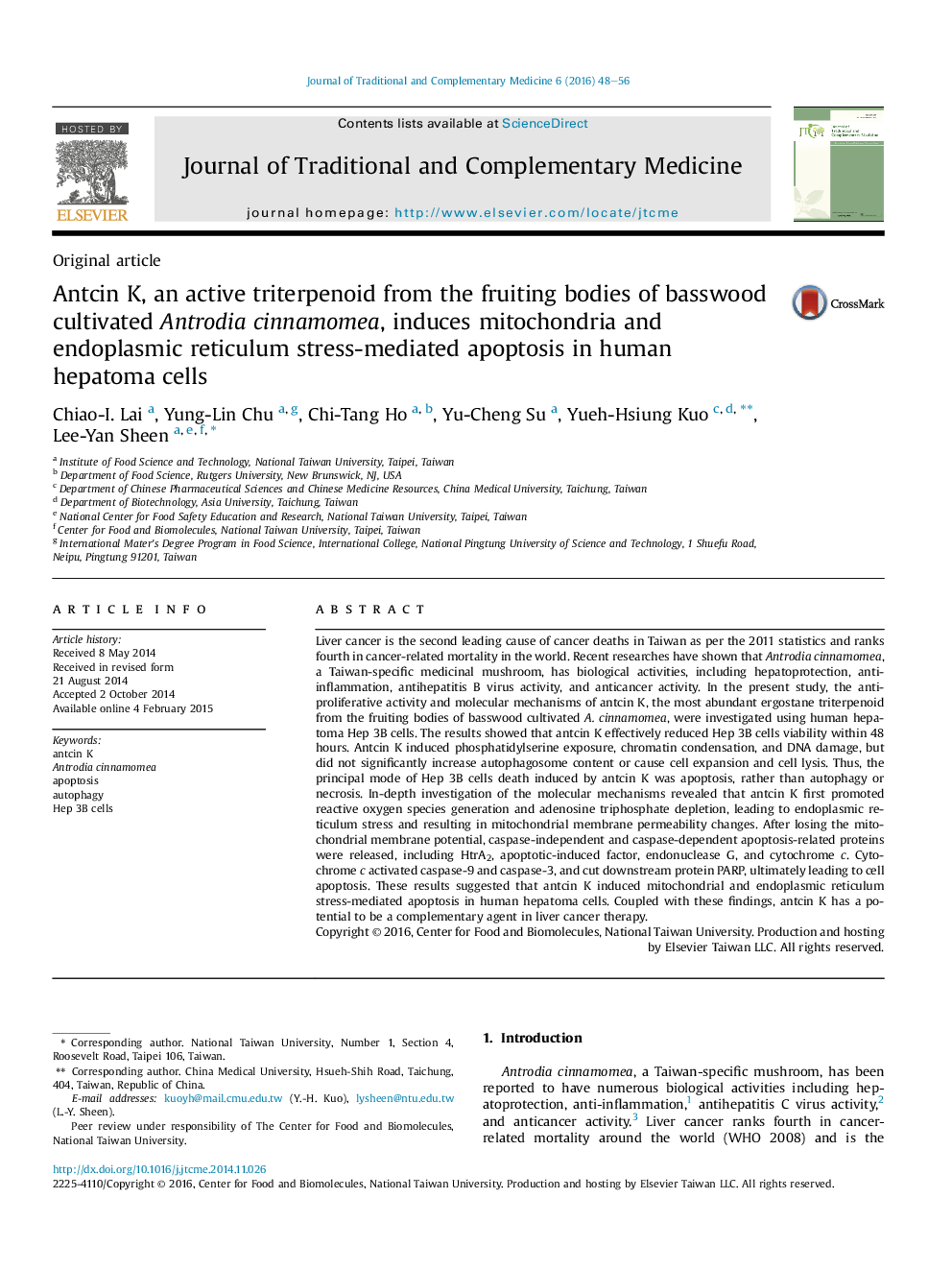| Article ID | Journal | Published Year | Pages | File Type |
|---|---|---|---|---|
| 3099725 | Journal of Traditional and Complementary Medicine | 2016 | 9 Pages |
Liver cancer is the second leading cause of cancer deaths in Taiwan as per the 2011 statistics and ranks fourth in cancer-related mortality in the world. Recent researches have shown that Antrodia cinnamomea, a Taiwan-specific medicinal mushroom, has biological activities, including hepatoprotection, anti-inflammation, antihepatitis B virus activity, and anticancer activity. In the present study, the antiproliferative activity and molecular mechanisms of antcin K, the most abundant ergostane triterpenoid from the fruiting bodies of basswood cultivated A. cinnamomea, were investigated using human hepatoma Hep 3B cells. The results showed that antcin K effectively reduced Hep 3B cells viability within 48 hours. Antcin K induced phosphatidylserine exposure, chromatin condensation, and DNA damage, but did not significantly increase autophagosome content or cause cell expansion and cell lysis. Thus, the principal mode of Hep 3B cells death induced by antcin K was apoptosis, rather than autophagy or necrosis. In-depth investigation of the molecular mechanisms revealed that antcin K first promoted reactive oxygen species generation and adenosine triphosphate depletion, leading to endoplasmic reticulum stress and resulting in mitochondrial membrane permeability changes. After losing the mitochondrial membrane potential, caspase-independent and caspase-dependent apoptosis-related proteins were released, including HtrA2, apoptotic-induced factor, endonuclease G, and cytochrome c. Cytochrome c activated caspase-9 and caspase-3, and cut downstream protein PARP, ultimately leading to cell apoptosis. These results suggested that antcin K induced mitochondrial and endoplasmic reticulum stress-mediated apoptosis in human hepatoma cells. Coupled with these findings, antcin K has a potential to be a complementary agent in liver cancer therapy.
